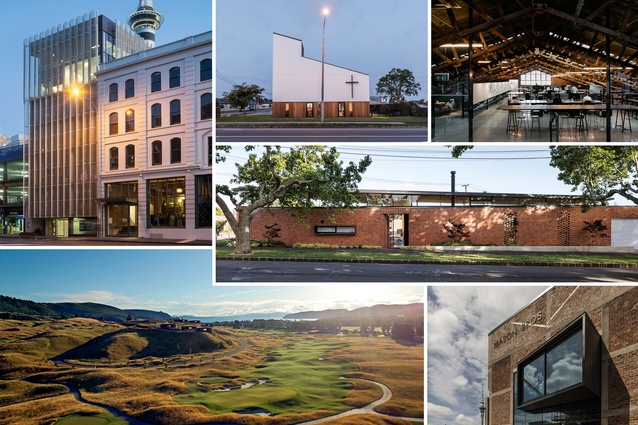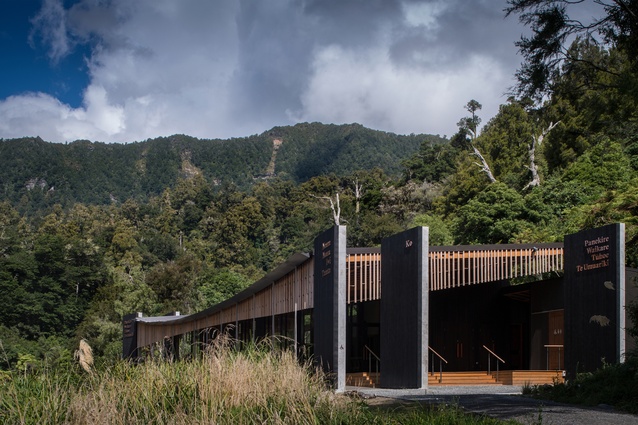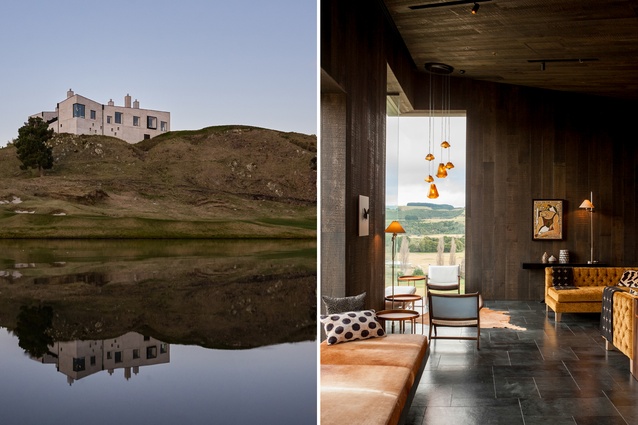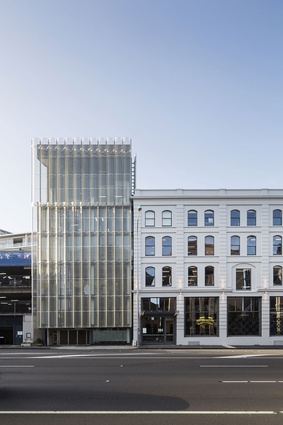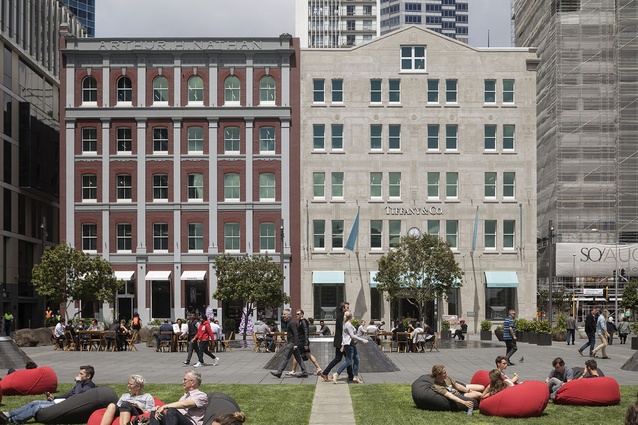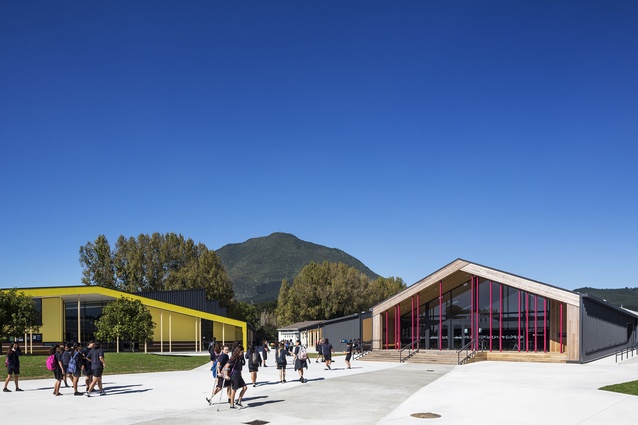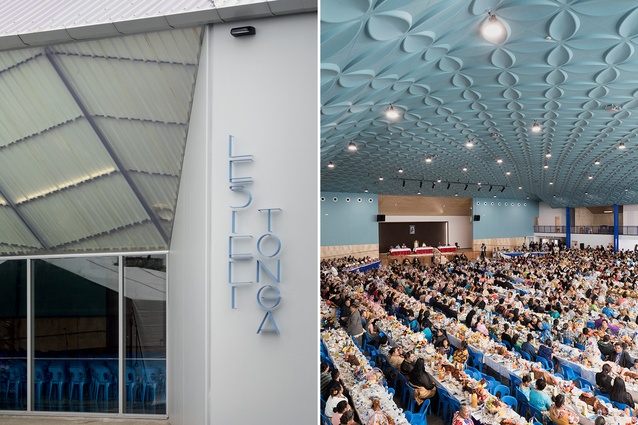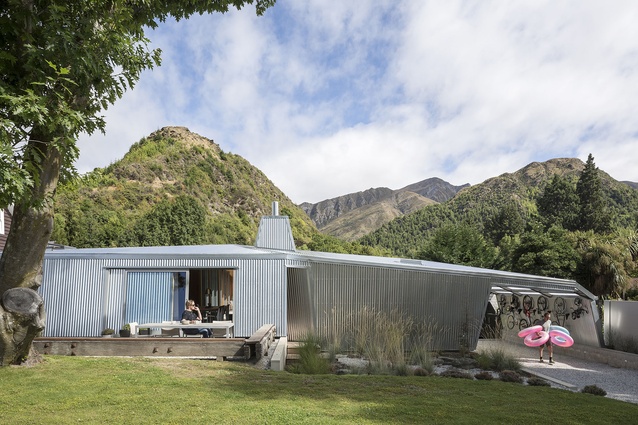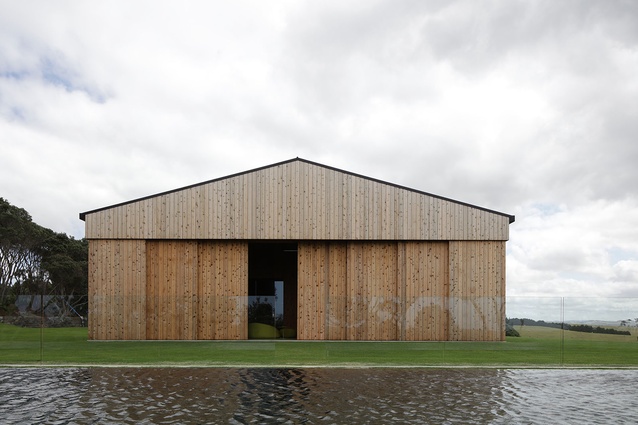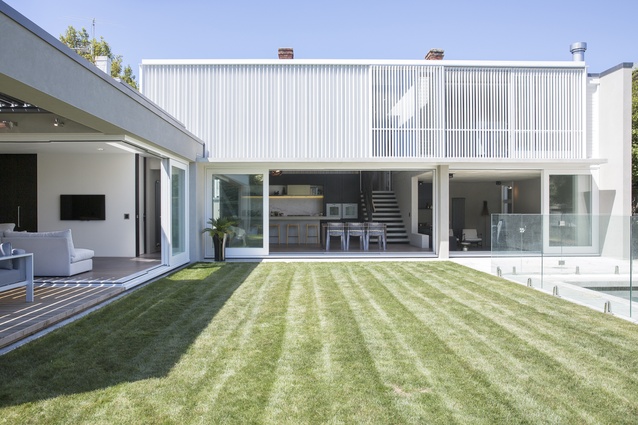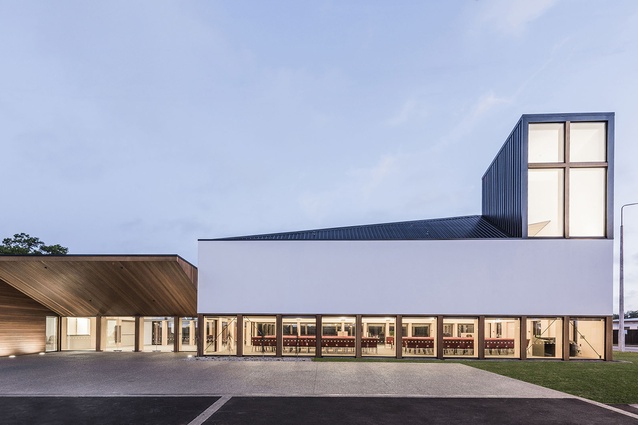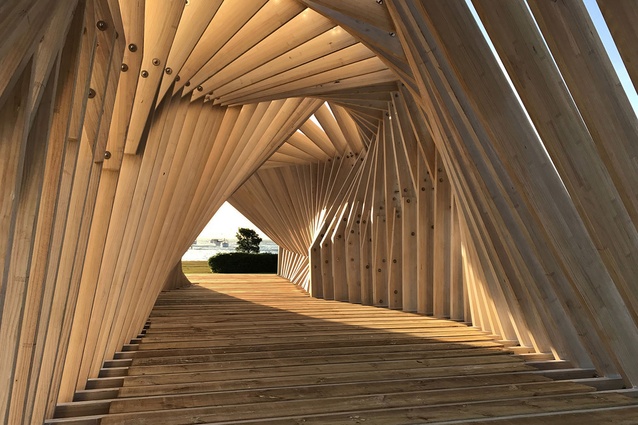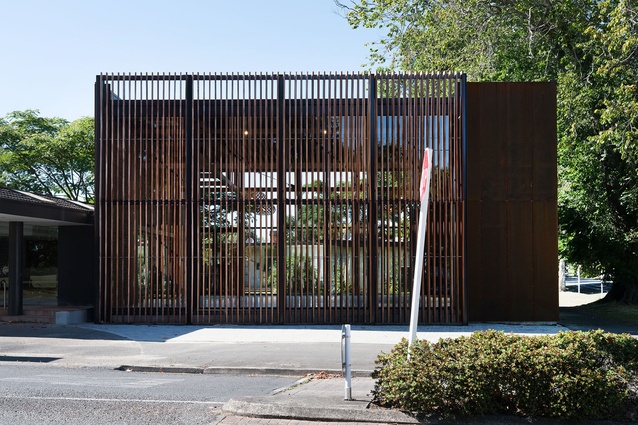2017 New Zealand Architecture Awards: winners
Twenty-two buildings and structures have won awards in the 2017 New Zealand Architecture Awards, announced Friday 10 November at a gala evening at Auckland’s Viaduct Events Centre.
This year’s awards jury was led by Arrowtown architect Louise Wright and comprised Auckland architects Lance Herbst and Jack McKinney, and Brisbane-based architect Kerry Clare. The jury visited 51 shortlisted buildings on a tour that went from the Bay of Islands to Central Otago.
Four of the winning projects received further acknowledgement in the form of category awards named for outstanding New Zealand architects.
Full list of winners below, with jury citations:
JOHN SCOTT AWARD FOR PUBLIC ARCHITECTURE:
Bishop Selwyn Chapel by Fearon Hay Architects
The exquisite chapel is a sensitive insertion into a site with two strong but disparate existing buildings. The ambition of the concept has been matched by the quality of its realisation; the chapel is one of the outstanding works of recent New Zealand architecture. Read the full commentary here.
TED MCCOY AWARD FOR EDUCATION:
Te Wharehou o Waikaremoana by Tennent Brown Architects
Te Wharehou o Waikaremoana is the product of a holistic process in which sensitive design and considered siting are complemented by a thoroughgoing commitment to sustainable principles. The building is an impressive expression of Ngāi Tūhoe’s identification with their land and its history, and an excellent medium for the transmission of knowledge about a place and its people to visitors from around the world. Read the full commentary here.
SIR IAN ATHFIELD AWARD FOR HOUSING:
Courtyard House by Guy Tarrant Architects
In a welcome departure from suburban convention, the house engages boldly with the street in order to provide a courtyard plan ideally suited to Auckland’s climate. A strong but generous public presence goes hand in hand with a sheltered and most liveable private realm. Read the full commentary here.
SIR MILES WARREN AWARD FOR COMMERCIAL ARCHITECTURE:
The Lodge at Kinloch Club by Patterson Associates
The architect has taken full advantage of a spectacular site near Lake Taupo to create a richly atmospheric building that offers a luxurious guest experience. The massing of the building, treatment of fenestration, positioning of views and detailing have a common excellence. Read the full commentary here.

COMMERCIAL ARCHITECTURE CATEGORY:
Kauri Timber Building by Fearon Hay Architects
Old and new co-exist harmoniously in this admirable piece of cityscaping that makes a staunch, if locally lonely, stand alongside a totally car-dominated street that follows the old Auckland shoreline. The past is acknowledged and respected in the renovation of the nineteenth century building, with its measured, horizontal proportions, and in the exterior treatment of the skinnier, taller new addition. In an opaque rendering of a nice historical allusion, a mesh façade lightly screens vertical, half-round columns suggestive of the kauri logs that were once traded from the original building. Connections between the two structures, and lower and upper street levels, are well handled, as is the exposure of the old sea wall and the admission of natural light into circulation spaces and offices.
Mason Bros. by Warren and Mahoney Architects

This complex project entailed the reconciliation of several design imperatives: preserving and seismically strengthening a large character warehouse; converting the building to house several levels of fluid workspaces and different tenancies while clearly expressing the heritage structure; and acknowledging the precinct masterplan and anticipating development in the environs of the building. The insertion of a long, suspended, reflective box of workspaces allowing for the preservation and revelation of the historic ‘container’, the passage of a generous laneway along the length of the building, and the admission of natural light through the retained sawtooth roof combine to produce a spacious, user-friendly and highly textural environment.
Australis Nathan by Peddle Thorp
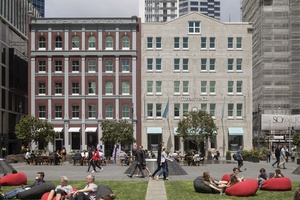
An exercise in historicist whimsy – unexpected and delightful in Auckland – has added a new face to a restored Customs Street heritage building that, after more than a century of single frontage existence, found its backside exposed to view from a recently created public square. The sgraffito treatment of this formerly plain, newly-visible façade enlivens the building, adds visual interest to the public realm of the square, and no doubt enhances its appeal to high-end retail tenants. The restoration and upgrading of the neighbouring brick building was part of the same project; in its contrasting manner, that Victorian building also now presents an attractive face to the square while offering similar, high-quality retail and office spaces.
EDUCATION CATEGORY:

New Law & Management Building, University of Waikato by Opus Architecture
Three concrete buildings, carved into a sloping site and linked by a green roof and organised around a central, sunken courtyard together constitute a strong urban presence and form an impressive gateway to the university campus. The confident design, exemplified by the sure handling of massing and voids, is an architectural expression of the University of Waikato’s ambition. The building’s solidity conveys permanence and seriousness, while the control of light and movement, and the provision of green breathing spaces and natural ventilation, demonstrate an understanding of and sympathy for user well-being.
Tarawera High School by RTA Studio
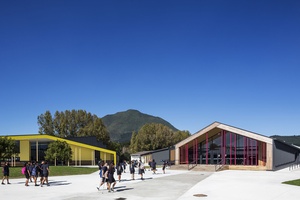
The Ministry of Education got a lot of architecture for its money with this transformative project in the small town of Kawerau. Within the tight budget, the architects found a way to provide for a massive overhanging roof that connects the new school’s buildings, which are organised around a central wharenui and oriented to significant geographical and cultural landmarks. The drama of the big sheltering gesture is supported by the attention paid to the planning and detailing of the buildings, and the colours applied to them. Increased attendance rates and improved academic results suggest that the design and performance of the new school is having an inspirational effect on students and the local community.

Te Wharehou o Waikaremoana by Tennent Brown Architects
With its gently draping roof form the visitor centre and administration centre for Ngāi Tūhoe sits comfortably in its bush-clad setting next to Lake Waikaremoana. The building does not present as an imposition on the land, and the sustainable principles pursued in its construction are consistent with the sensitivity of the design approach. For all that, the building is assertive: the concrete pillars supporting the structure proclaim rightful occupation. Te Wharehou o Waikaremoana has a definite educational purpose: because it conveys such a strong sense of belonging in its place, it is an appropriate vehicle for Tūhoe’s determination to tell visitors the story of the iwi and the land it inhabits.
ENDURING ARCHITECTURE CATEGORY:
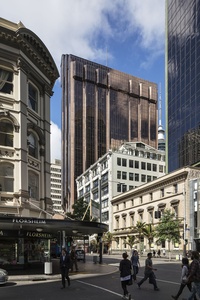
151 Queen Street (1992) by Peddle Thorp Aitken
A monument to a particularly febrile period in the history of local capitalism, 151 Queen Street – formerly the Fay Richwhite Building – has transcended the circumstances of its genesis. Time has shown that the 29-story tower is, in terms of its design and construction quality, architectural detailing and provision of amenity, head and shoulders above nearly all similar buildings of its era, and most that have been built since then. The building has a slender grace, bay windows on the topmost floors draw natural light deep into the interior, and the floor plan is generous. The glass technology, especially that deployed above the entrance foyer, was an adventure in contemporary specification that testifies to the nerve of the architects and continues to pay dividends for the building’s owner.
HERITAGE CATEGORY:
Christchurch Arts Centre Clock Tower & Great Hall by Warren and Mahoney Architects

The complex, post-earthquake restoration and seismic strengthening of two components of a highly significant Christchurch complex of Victorian buildings has been achieved with exemplary care and respect for both the architectural legacy of Benjamin Mountfort and heritage conservation principles. Good decisions were made throughout this project, which called for painstaking attention to detail and the faithful replication of the existing building fabric. It was important for the city that the Arts Centre Clock Tower and Great Hall were brought back to life: the excellence of the buildings’ restoration matches their status in civic life and communal memory.
South Bloc by Edwards White Architects

A Hamilton building from the Ministry of Works’ 1960s heyday has been liberated of later accretions and awkward reworkings to reveal the original design and acknowledge the integrity of the original materials. The architects recognised the essential quality of the building and have carried out their interventions with care and also considerable flair. Workspaces and circulation have been improved enormously, modern services have been integrated sympathetically into the revived building, and natural light has been brought into the interior. The building is a strong presence on a long stretch of street, and significantly enhances the local cityscape.
HOSPITALITY AND RETAIL CATEGORY:
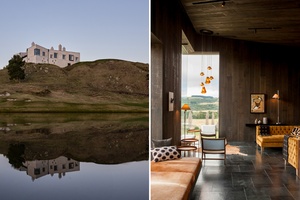
The Lodge at Kinloch Club by Patterson Associates
This is a masterful work. Sited on the edge of a south-facing escarpment, with windows set deep within thick walls and battlement terraces overlooking huge views of tundra and tussock, The Lodge at Kinloch Club reads as a contemporary take on a Scottish baronial castle. The building is heavily textural, highly tailored, impeccably detailed – moody and rather mysterious. The design intent, clearly, is to give guests who have ventured to a remote place a powerful and rich experience. In this, the building spectacularly succeeds.
Lesieli Tonga Auditorium by Bull O’Sullivan Architecture

On this community-funded Auckland project an architect, and architecture, have really made a difference. The budget was very tight, the project timeframe was extended, and the skills of the builders were sufficient if not sophisticated. Consequently, the architect had to focus on the big picture. The devil might have had his way with some of the details in the auditorium for the Free Wesleyan Church of Tonga, but the building clearly satisfies its higher purpose. Under the vast blanket of a frangipani-patterned ceiling – the building’s singular gesture – more than 1,500 congregants can gather for feasts and festivities, celebrations and commemorations. The robust building admirably meets its users’ needs, and is testament to its architect’s determination and the depth of his community engagement.
HOUSING CATEGORY:
Hamilton Family Home by Bull O’Sullivan Architecture

This is a beguiling house. The exterior of the low-slung building could hardly be more simple, but is also highly suggestive; the interior is relaxed, but the planning is also well-controlled. The casual cladding of corrugated iron alludes to Arrowtown’s historic Chinese miners’ cottages, and also to the glacial activity that shaped the regional geology: the front entry might be read as a crevasse between two colliding forms. The good humour that pervades the project is allied to an understanding of the rhythms of family life, exemplified in the central location of the children’s bathroom, and the local climate, demonstrated by the house’s generous overhangs. The democratic instinct of architect and clients is evident in the house’s sensitive siting and address to the street.
Town House by Christopher Beer Architect
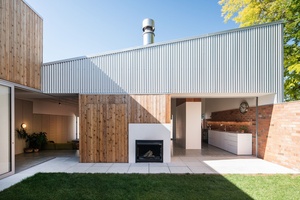
Pushing the house to the property boundary has allowed for the creation of a resolutely urban-looking house in a provincial town’s CBD. This move, such a refreshing departure from the usual suburban typology that that typifies country towns, also facilitates the integration of several courtyards into the open-plan layout of the whole composition. This planning accommodates a diverse programme that includes public and private family areas, an artist studio and coffee kiosk. The co-location of the different functions is handled adroitly, as is the massing of forms on the site. In sum, this is a bold concept, excellently realised.
Courtyard House by Guy Tarrant Architects

The design of the house is a very clear response to the challenges of a wedge-shaped corner site flanked by busy suburban streets. The walled courtyard house, pushed to the property boundary, is protected from the public gaze, but does not feel insular; the continuous clerestory not only allows views out but offers glimpses in, without compromising the inhabitants’ privacy. The clerestory also heightens the graceful, floating effect of the roof. Scale is well handled and the planning is generous; the interior linings and cabinetry reveal the application of a sure touch. Organised around a central pool, the house is a calm oasis offering occupational comfort and sensory delight.
Paoneone by Patterson Associates
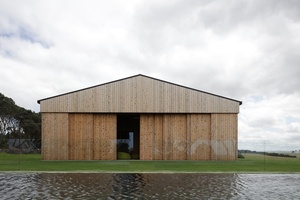
A relatively straightforward proposition – an intermittently-occupied house that can be opened up and folded closed – has engendered a thoroughly rigorous and disciplined response. Intellectual reduction was followed by over-scaled realisation. Very generously proportioned volumes are encased in extremely well crafted materials selected from a limited palette. Space is the luxury here; the wooden sides of the house slide back so the big indoors flows to the great outdoors. Time is another commodity in plentiful supply: the level of detailing evident in the house is not achieved quickly. On an idyllic site, considerable resource has supported a single-minded pursuit of quality.
HOUSING – ALTERATIONS AND ADDITIONS CATEGORY:
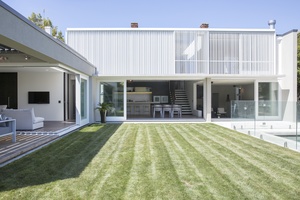
Herne Bay House Alteration by Gerrad Hall Architects
Two goals have been successfully pursued in this project: to add a distinctive lower floor to an existing villa, and to connect the resultant living areas to the rear garden and lawn. Transitions, from the light and loose front of the house down into the sunken, cave-like addition, and between the lower-level spaces, have been very well handled. Rooms retain their individuality without sacrificing compatibility; materials are deployed inventively but not discordantly. The architect has given an imaginative twist to the familiar tale of the villa extension.
INTERIOR ARCHITECTURE CATEGORY:

Faraday Street Studio by Fearon Hay Architects
Exhibiting nice judgement in what to add and what to leave the architects have converted the upper floor of a 1940s warehouse into a studio for their own practice. A loft apartment effect is what the architects set out to achieve and in exposing the building’s original timber frames and trusses and inserting a concrete floor they have realised their ambition. The adept deployment and finessing of industrial materials yields a sense of tough luxury. The allusion to the world of the big city walk-up apartment is signalled at the street entry where the door in is flanked, valet-like, by the sparely furnished premises of a bespoke tailor.
SGA Studio and Workshops by SGA – Strachan Group Architects
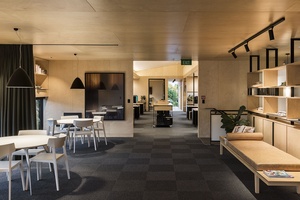
In a very real sense, this studio and workshop is a built manifesto for the architecture practice that designed the building for its own use. A deep understanding of how buildings are put together, materials deployed, and problems solved are all evident in this project, along with typical inventiveness, commitment to sustainable principles, experiment with prefabrication, mastery of a restrained palette, and bespoke control of the interior fit-out. More than that, the building is clearly designed to recognise and nurture the particular culture of the practice: this firm operates as a family. The studio, with its warm timber cladding and abundant natural light and fresh air, is a wonderful working environment, and the workshops are capacious and, of course, well-organised.
PUBLIC ARCHITECTURE CATEGORY:
Chapel Street Centre by Dalman Architects

This church does not just communicate its function, but also invites observation of the congregation at worship. The idea, successfully realised, was to replace a parish church damaged in the Christchurch earthquakes with a building that would be open, transparent and welcoming. The new church is nicely proportioned; the worship hall, with its ceiling that rises into a spire that serves as both light well and lantern, is naturally the star of the show, but ancillary spaces such as the foyer, music room, sports hall and kitchen have all received careful attention. The building has a relaxed generosity and pleasant manner: down to earth, but also light in spirit.
Bishop Selwyn Chapel by Fearon Hay Architects

This sublime structure fully delivers on the promise of an ambitious, competition-winning concept. A most harmonious relationship has been established among the three building elements: solid floor, feather-light roof and well-nigh dematerialised walls. In designing the chapel, the architects very wisely avoided taking sides in any stylistic dispute between the mid-twentieth century, neo-Gothic brick cathedral to the rear and the late nineteenth century, Gothic Revival timber church to one side. Instead, the chapel mediates between disparate neighbours, establishing respectful connections to both, and to the garden to which it is adjoined and to Maungakiekie in the distance, while at the same time holding its space under the golden cloak of its roof. Detailing is sensitive and sophisticated, and fittings and furniture are of a very high standard.
SMALL PROJECT ARCHITECTURE CATEGORY:
Waiheke Gateway Pavilion by Stevens Lawson Architects
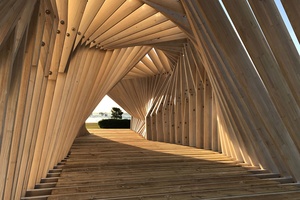
A temporary structure acknowledging New Zealand’s timber building history that was designed originally as a pavilion for the Venice Architecture Biennale has been realised as a Unitec student project. The openings at either end make a nice bi-cultural allusion to both whare and gable, and the whole structure may be read as a wharenui or gateway, which is the purpose it served when included in a sculpture exhibition on Waiheke Island. Appropriately enough, for an installation that was always intended for a maritime setting and which will remain on Waiheke, the wooden ribs of the pavilion invite interpretation as the vertebrae of a beached whale.
St John’s Church by MOAA Architects
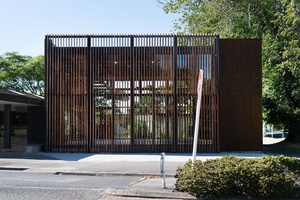
This addition to an existing church is an elegant, beautifully proportioned little building. In essence a single room, it offers its users a calm, protective environment encouraging of contemplation but also sympathetic to more active occupation. The crafted interior is complemented by simple, effective screening on the street side; the glazed façades on the north and south elevations allow for good connections to a rear garden and an adjacent park. A slight shift in the building’s axis gives it just the right amount of space to express its identity without inducing any separation anxiety.
2017 NZIA GOLD MEDAL:
Andrew Patterson of Patterson Associates
Over the course of three decades Andrew Patterson has forged a reputation as a confident designer of striking buildings that have great presence. His practice’s portfolio is replete with distinctive projects. Patterson buildings do not just assert their difference against the designs of his peers; they are also highly differentiated from each other. Consequently, Andrew’s work epitomises bespoke architecture and expresses the paradox of such particularity: he has generated a lineage uncharacterised by familial resemblance. He seems determined not to repeat himself. Read the profile of Andrew Patterson here.
For more indepth coverage of the 2017 awards, see the Nov/Dec issue of Architecture New Zealand magazine.
The New Zealand Architecture Awards is a programme run by the New Zealand Institute of Architects with the support of Resene, which has sponsored the Architecture Awards programme for 26 years.

